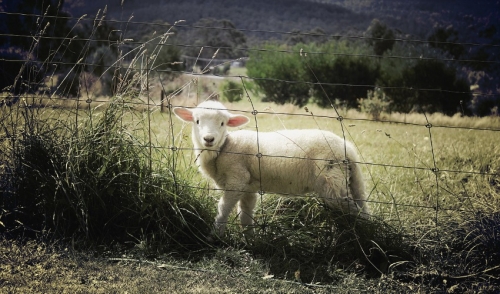{article.name}
Stay Informed
Preventing Overeating Disease in Lambs

- Share this:
- Share on Facebook
- Pin on Pinterest
- Tweet on Twitter
Overeating Disease in sheep is actually a misnomer. The disease is more accurately termed enterotoxemia. This disease is caused by the bacteria Clostridium perfringens. There are actually 6 types of this bacteria (A,B,C,D,E, & F), however only types B, C, & D are significant in sheep and lambs.
The infection of enterotoxemia caused by CL. perfringens types B & C causes severe enteritis, dysentery, toxemia and high mortality in young lambs. Type C also causes the disease in adult sheep. Usually, lamb dysentery is seen in young animals under 3 weeks of age. The proper prevention of enterotoxemia is caused by Type C vaccination of the pregnant dam. Vaccination is recommended in the last third of gestation, with a booster about 4 weeks after the first injection.
Clinical signs of acute lamb dysentery caused by Cl perfringens Type C include lambs that stop nursing, become listless, produce blood tinged diarrhea, and die within a few days. Many times, the lamb dies prior to exhibiting clinical signs of the disease. Treatment is usually ineffective and the best course is prevention by vaccination of the pregnant dam.
Enterotoxemia caused by Cl perfringens Type D is found frequently in lambs and less likely in goats. This is the disease most commonly referred to as “Overeating”. This disease usually affects young lambs under 2 weeks of age, or the weaned lambs that are consuming a high-carbohydrate diet (grain). However, lambs grazing lush pastures are also susceptible. There are few signs of the disease apart from “sudden death syndrome”. The term “Overeating” was given to this disease because it usually affected the larger lambs consuming grain diets, and without notice of signs, the lambs were usually healthy one day and found deceased the next.
Treatment is usually ineffective. Vaccination of pregnant dams and lambs is recommended. Lambs nursing ewes that have been vaccinated receive immunity through the ewe’s milk. Most sheep are found to have at least some population of Cl. perfringens in their digestive tract. When lambs begin consuming large amounts of carbohydrates (milk or grain) the bacteria flourish producing a waste product that is toxic. The toxin affects the central nervous system. Usually, the bacteria proliferate causing the toxin to be released in a short period. This causes the unvaccinated lamb to succumb to the disease in a short period of time, usually without clinical signs.
The recommended vaccination schedule is to initially immunize pregnant ewes in the last trimester of gestation with a booster about 4 weeks later, and subsequent annual vaccinations. For young lambs, usually their immune system is not fully developed to allow the full effect of vaccination prior to 4 weeks of age. So, it is suggested that young nursing lambs be vaccinated with Cl. perfringens Types C & D at 4 weeks of age and again 2 to 4 weeks later. An annual vaccination is recommended to prevent occurrence of the disease in the adult animal.
It is also suggested that young lambs be vaccinated for Tetanus (Clostridium tetani) at the same time as vaccinated for enterotoxemia. This can be accomplished by using a toxiod vaccine that includes Cl. perfringens Types C & D, and Cl. tetani (CD/T vaccine). Also, it is important to note the difference between toxoid vaccine and antitoxin. The Cl. perfringens Types C & D antitoxin provides protection almost immediately but gradually becomes ineffective in about 2 weeks. In contrast, the toxoid vaccine typically builds immunity in a 2 week period, and that immunity persists for about a year when given a booster 2-4 weeks after the initial vaccination.
When lambs are born to unvaccinated ewes, and the organism is present, it is advised that the lambs be treated first with antitoxin and then subsequently vaccinated with the toxoid vaccine for maximum protection.
When purchasing lambs from a breeder or through a club lamb sale, it is a very good idea to ask the breeder if the lambs have been vaccinated. If that answer is no, the new owner should vaccinate the lambs immediately, and then again in about 2 weeks.
Special Offers
We are constantly adding new specials to our site. Be sure to check back often!


Comments